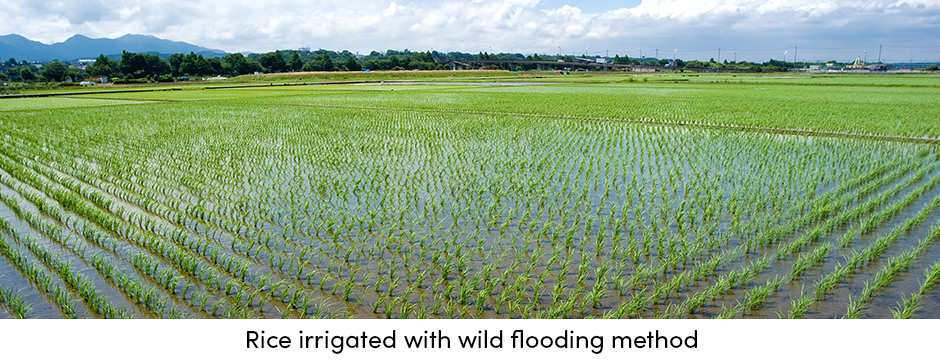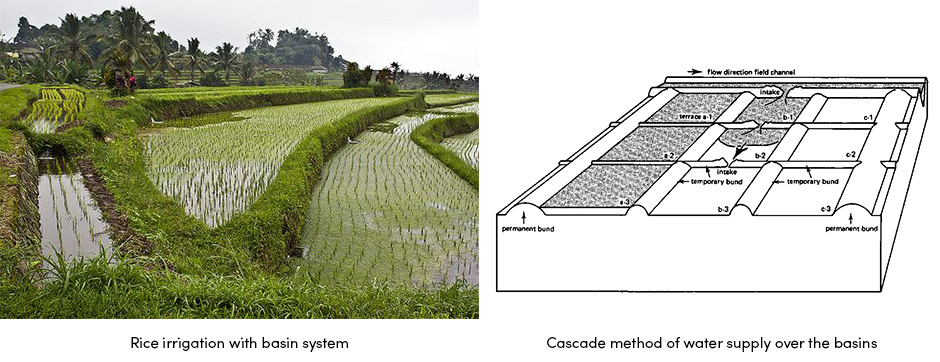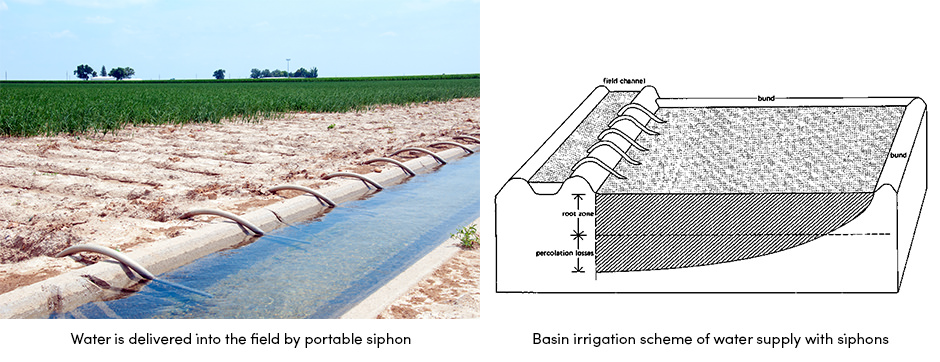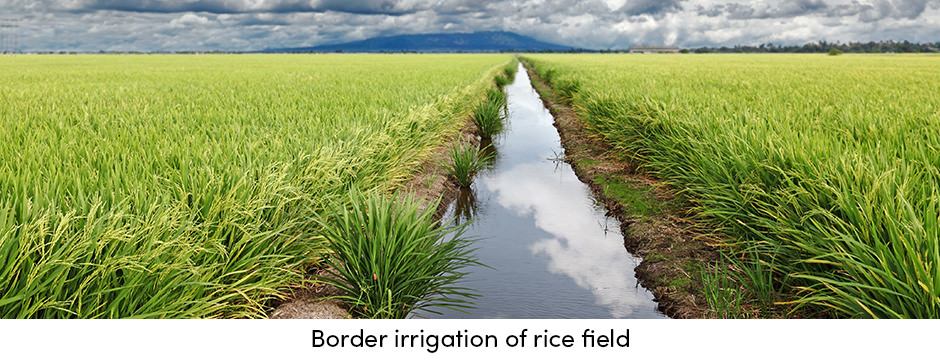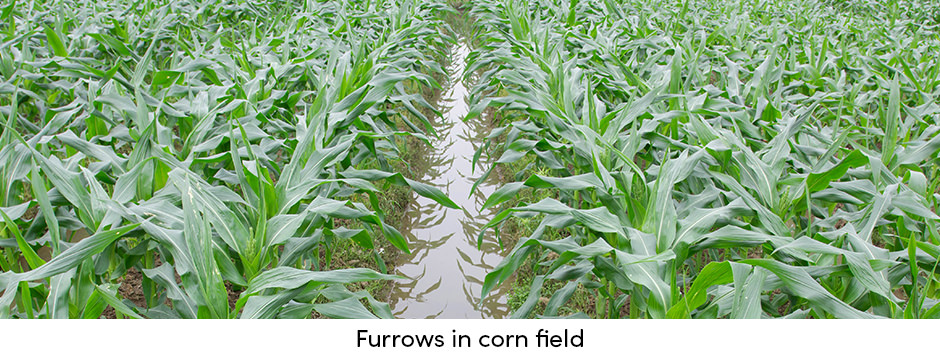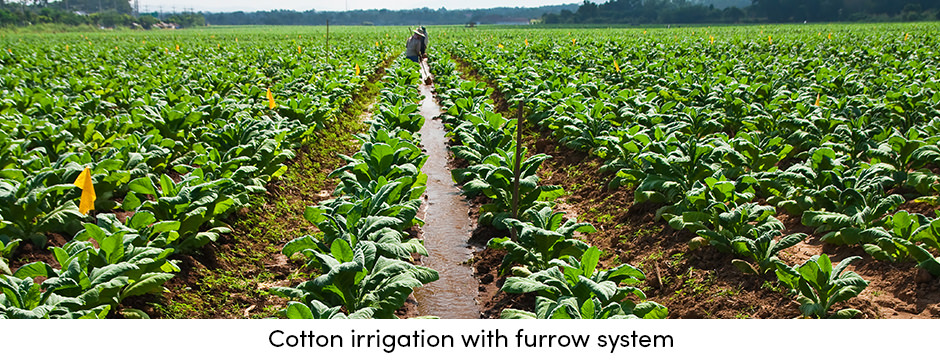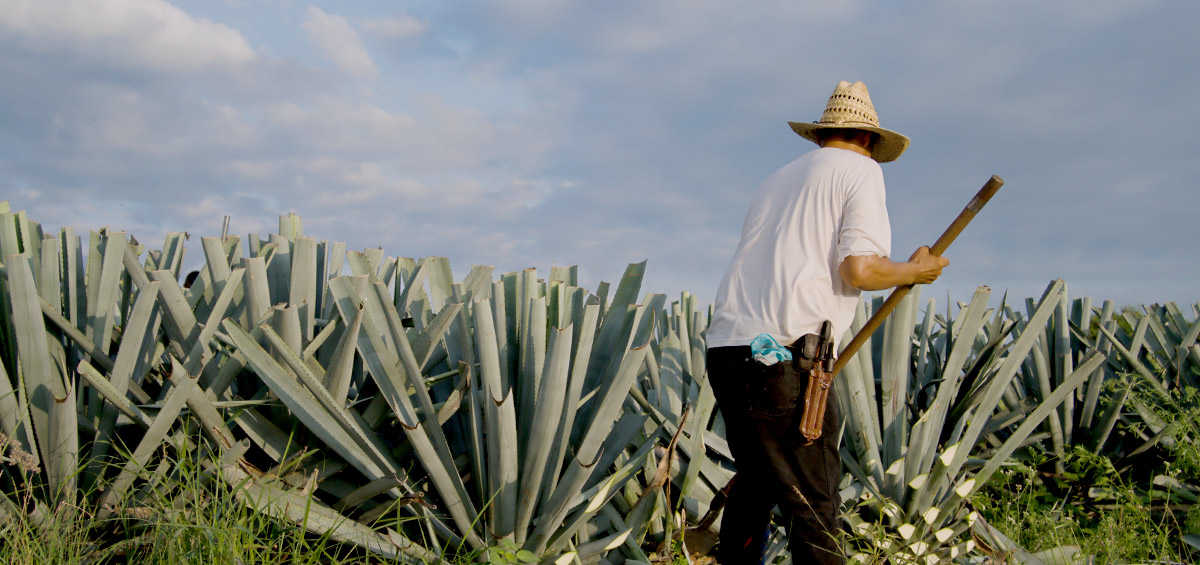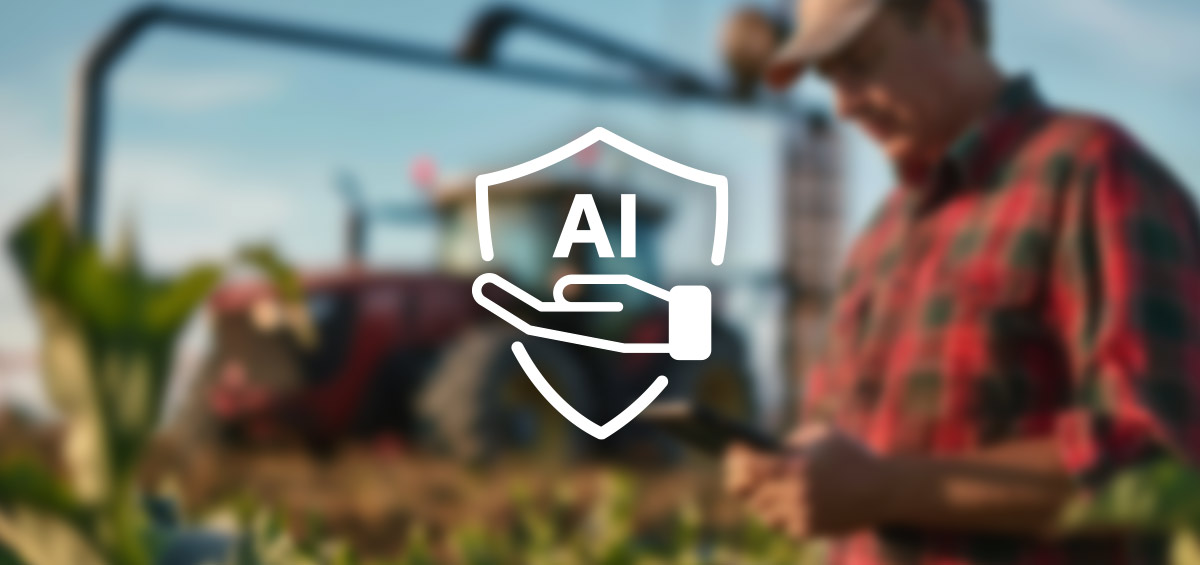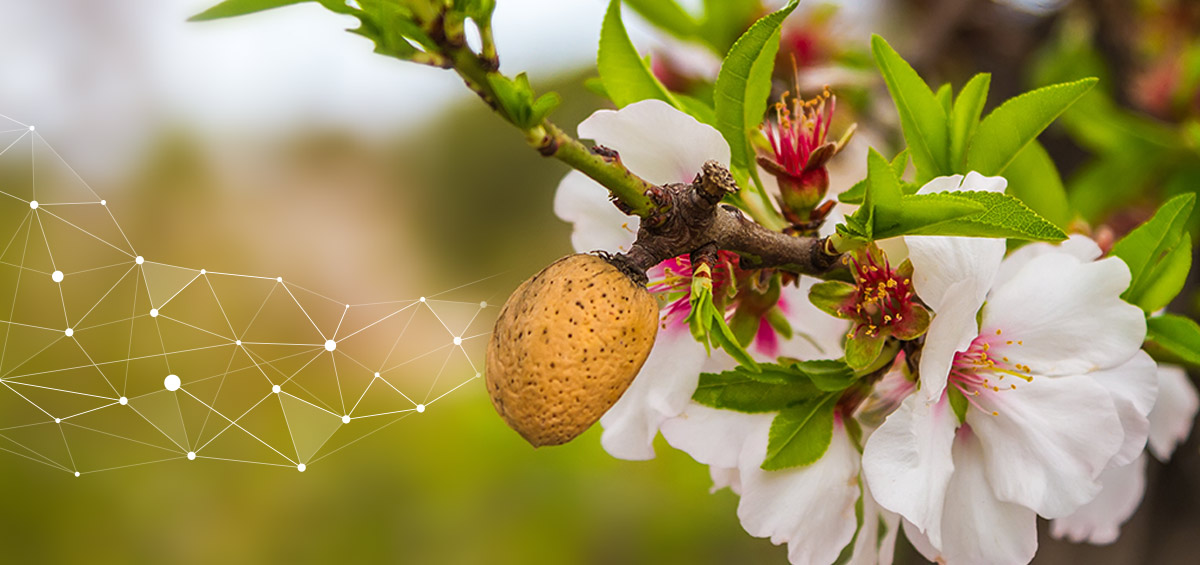Surface irrigation is the oldest and most utilized type of irrigation systems. Even ancient farmers in Egypt, India, and China used surface irrigation systems to supply crops with water.
It’s a simple and easy system to manage because it doesn’t require any installation of irrigation mechanisms. Water is simply applied to the field through lined or unlined open channels and pipelines. Water then flows across the surface until it covers the entire area needing irrigation. After water application is stopped, applied water creates ponds on the field’s surface and then either drains or infiltrates into the soil.
Although labor intensive, surface irrigation systems have advantages when compared to sprinkler and drip irrigation. The most significant advantages are low initial cost, easy maintenance of the system, and compatibility with all soil types.
Based on the slope, the size and shape of the field, the end conditions, and how water flows into and over the field, surface irrigation is classified into:
- Wild flood irrigation
- Basin irrigation
- Border irrigation
- Furrow irrigation.
Each surface system has unique advantages and disadvantages that depend on several factors: initial cost, size and shape of fields, soil characteristics, nature and availability of the water supply, climate, cropping patterns, and influences external to the surface irrigation system.
Wild Flood Irrigation
In flood irrigation, water is delivered to the field by ditch or pipe and flows over the soil surface through the crops. Despite its simplicity, this irrigation type has negative effects on the crop and soil, using both water and labor inefficiently.
With flooding, only half of the applied water is actually used by the crop. The other half is lost to evaporation, runoff, infiltration of uncultivated areas, and transpiration through the leaves of weeds. For this reason, wild flooding is mainly used on uneven terrains to irrigate pasture, hay, and small grains, which are not affected by sufficient water.
An important aspect to consider in wild flooding is that it’s a great solution to irrigate land that cannot be managed by other irrigation methods.
Basin Irrigation
As the most common type of surface irrigation, basin irrigation is the oldest and most simple of irrigation types. Basin irrigation requires a leveled soil surface and a narrow ridge 15 to 50cm high on all sides of the field which will serve as the basin. The irrigated field is divided into smaller areas surrounded by small levees. Water is applied into each basin by various pipes and siphons, or through the levee. Water is removed from the field with surface drains on the low contour levee.
Basin irrigation is suitable for use on moderate to slow intake soils and deep-rooted, closely spaced crops such as maize, grains, cotton, or orchards. Crops that do not tolerate flooding and soils subject to crusting can be basin irrigated by furrowing or using raised bed planting.
Despite its effective method of leaching salts from the soil profile into the deeper groundwater, basin irrigation does have some limitations:
- Leveling the field surface may create a financial and labor issue for the farmer
- Soil tillage is limited due to the small field area
- Levees can be easily destroyed by the entering of farm equipment into the field
- Challenging maintenance of narrow ridges (levees) along the field sides.
Basins range in size, from those designed to irrigate individual trees or small areas of vegetable crops, to rice paddies that occupy several acres.
Border Irrigation
Border irrigation is the type of flood irrigation which works on the principle of basin irrigation. Water is applied to the field through wide borders. The area between borders is border strip, on which crops grow, and may range from 3-30 m (10-100 feet) in width. To manage border irrigation, the border surface must be leveled across its width so the water can spread uniformly across it.
Sloping borders are suitable for all crops, including grains, alfalfa, and tree fruits. Those that are sensitive to excessive water and soil that is too wet may not be appropriate to irrigate using this method.
Furrow Irrigation
Furrow irrigation is an irrigation method in which water is applied from open ditches or pipes through small channels, or furrows, along the field. As water flows through the channel, it infiltrates into the soil, thus irrigating crops. According to furrow direction and level, they can be classified into:
- Level furrow (lengthwise leveled furrows)
- Contour furrow (furrows curved to fit field topography)
- Graded furrow (straight channels down the field slope)
Furrow irrigation is suitable for crops sensitive to too wet soil and excessive water over the stem. Furthermore, crops not suitable for flood irrigation can be irrigated with the furrow irrigation method.
Although this method doesn’t require special farm equipment and can minimize irrigation costs, furrow irrigation does have disadvantages. These include:
- Labor intensive
- High accumulation of salts in the furrows
- Difficult passing of farm equipment across the furrows
- Furrow surface needs to be leveled
- Requires experience on the part of the farmer to divide water into each furrow and to maintain the correct flow rate
- Difficult to automate the system.
Low-Cost or Efficient Surface Irrigation System?
Unlike other surface irrigation types, furrow irrigation is the most efficient. It can achieve about 60% efficiency in water use. The other 40% is lost to evaporation, deep percolation in the upper ends of the rows and in the most permeable soils, and runoff from the lower end of the rows.
Due to the high potential of water efficiency, farmers increasingly use furrow irrigation systems. Additionally, constant modernization continues to make it even more efficient. The result is improved water efficiency by reducing the amount of excess water infiltrating into the upper part of the rows. Another important approach is to improve furrow irrigation efficiency by stabilizing soil structure with certain soil conditioners.
Surface irrigation systems are all low-cost because they don’t need additional farm equipment and expensive maintenance. For this reason, this ancient irrigation practice is more favorable among farmers, especially those in developing countries.
Irrigation is an obligation and very important farm practice, so farmers aim to manage it as cheaply and simply as possible.
Text sources: Alliance for Water Efficiency || CSS || TU Bergakademie Freiberg
Image sources: Pinterest || FAO || FAO

